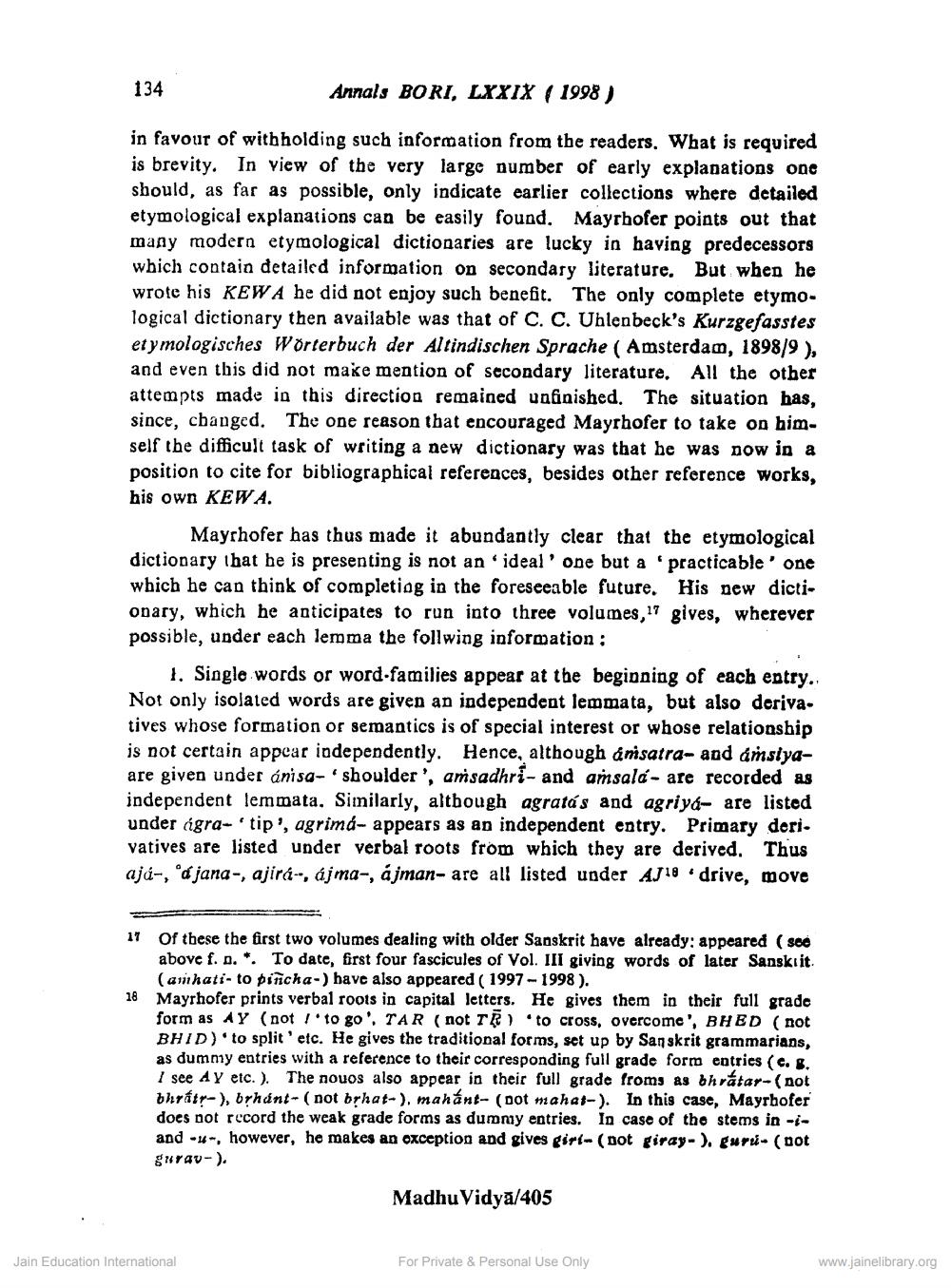________________
134
Annals BORI, LXXIX (1998)
in favour of withholding such information from the readers. What is required is brevity. In view of the very large number of early explanations one should, as far as possible, only indicate earlier collections where detailed etymological explanations can be easily found. Mayrhofer points out that many modern etymological dictionaries are lucky in having predecessors which contain detailed information on secondary literature. But when he wrote his KEWA he did not enjoy such benefit. The only complete etymological dictionary then available was that of C. C. Uhlenbeck's Kurzgefasstes etymologisches Wörterbuch der Altindischen Sprache (Amsterdam, 1898/9), and even this did not make mention of secondary literature. All the other attempts made in this direction remained unfinished. The situation has, since, changed. The one reason that encouraged Mayrhofer to take on himself the difficult task of writing a new dictionary was that he was now in a position to cite for bibliographical references, besides other reference works, his own KEWA.
Mayrhofer has thus made it abundantly clear that the etymological dictionary that he is presenting is not an ideal one but a practicable' one which he can think of completing in the foreseeable future. His new dictionary, which he anticipates to run into three volumes, gives, wherever possible, under each lemma the follwing information:
1. Single words or word-families appear at the beginning of each entry.. Not only isolated words are given an independent lemmata, but also derivatives whose formation or semantics is of special interest or whose relationship is not certain appear independently. Hence, although ánisatra- and distyaare given under ánisa- 'shoulder', amsadhri- and amsald- are recorded as independent lemmata. Similarly, although agratás and agrlyd- are listed under ågra tip', agrimd- appears as an independent entry. Primary deri vatives are listed under verbal roots from which they are derived. Thus ajá, "djana-, ajirá-, ájma-, ájman- are all listed under AJ18 drive, move
17 Of these the first two volumes dealing with older Sanskrit have already: appeared (see above f. n.*. To date, first four fascicules of Vol. III giving words of later Sanskrit. (amhati- to pincha-) have also appeared (1997-1998).
18 Mayrhofer prints verbal roots in capital letters. He gives them in their full grade form as AY (not 'to go'. TAR (not TR) to cross, overcome', BHED (not BHID) to split' etc. He gives the traditional forms, set up by Sanskrit grammarians, as dummy entries with a reference to their corresponding full grade form entries (c. g. I see Ay etc.). The nouos also appear in their full grade froms as bhrátar-(not bhrátṛ-), brhánt (not bṛhat-), mahant- (Dot mahat-). In this case, Mayrhofer does not record the weak grade forms as dummy entries. In case of the stems in -iand --, however, he makes an exception and gives giri- (not giray-), guru (not gurav-).
Jain Education International
Madhu Vidya/405
For Private & Personal Use Only
www.jainelibrary.org




